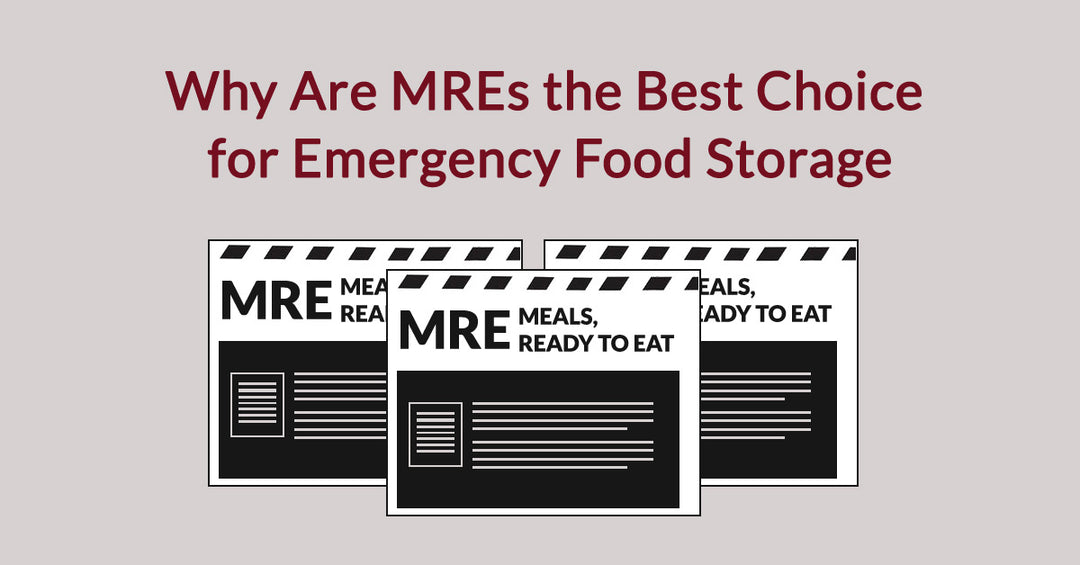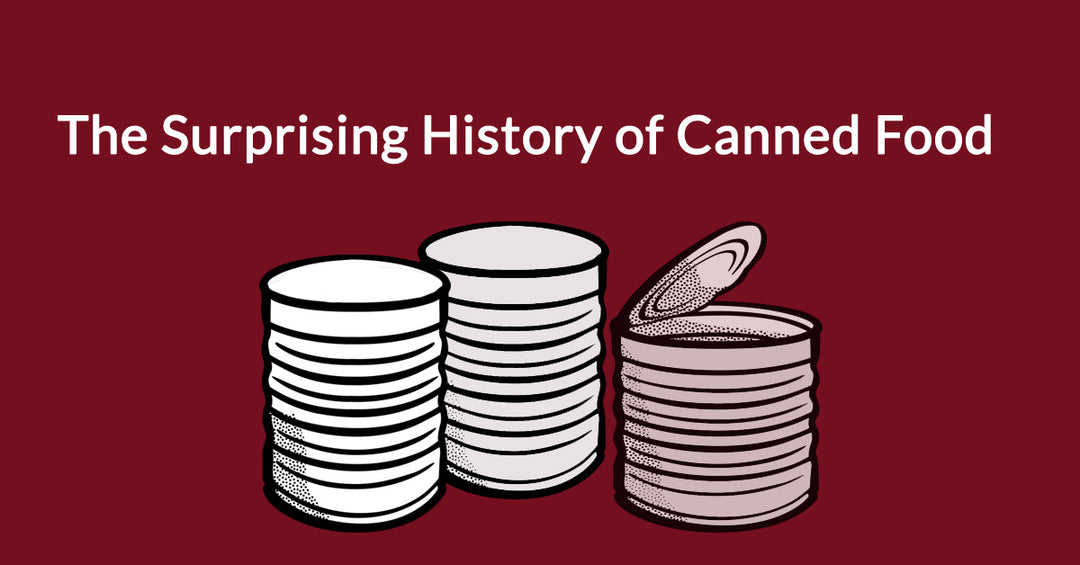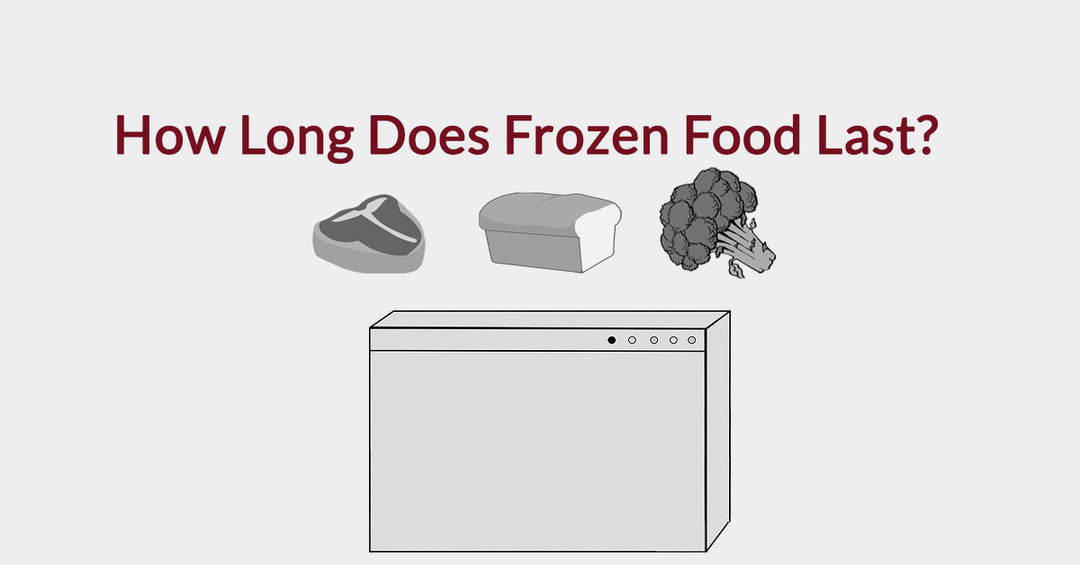The Evolution of the Meal, Ready to Eat

The Meal-Ready-To-Eat, or MRE, is a culinary staple for any soldier, sailor, airman, or Marine serving in our Armed Forces. It comes in recognizable brown plastic pouches with the words "Ready-to-Eat, Individual" running down the side. Its contents usually consist of a packet of crackers or bread, a spread of cheese, peanut butter, or jelly, an accessory pack, some powdered beverage mix of someone kind, a side dish, and the main course. The main course is always different, but whatever it is, the entree is always printed on the pouch, so you always know what you're getting. Whether it's Chili Mac or Chicken with Egg Noodles & Vegetables, each entree comes in its own plastic pouch that can be heated with the flameless ration heater that comes in every MRE. Simply open the flameless ration heater, insert the entree pouch and add water, being careful not to it overfill it. This makes the heater useless. But not to worry: if we look on the heater we'll see the instructions telling us exactly how to effectively cook our entree. Wait a few minutes and dinner is served.
The MRE is the perfect emergency food, saving the lives of many soldiers by providing a warm meal in the most desperate of situations and environments. It is the culmination of a long line of military issue rations used by the Armed Forces going as far back as the Revolutionary War.
During World War I, the military and civilian populations of the US faced food shortages. Based on findings by the Division of Food and Nutrition of the Medical Department that showed garrison rations were not only providing an excess of food, but they were nutritionally unbalanced and extremely high in fat, a new training ration was developed to avoid waste. The Reserve Ration came with 12 ounces of bacon or a pan of canned meat, usually something like corned beef hash.

With World War II came more rations, all developed by the Medical Nutrition Laboratory and the Medical Nutrition Laboratory of the Quartermaster Food and Container Institute. Ration "D", or the D ration bar of 1937 was the first emergency ration bar commissioned by the United States Army. It was developed to be high in food energy value and withstand high temperatures. Between 1940 and 1945, over 3 billion of the D ration bars were distributed to soldiers throughout the world.
Throughout the same war came rations that featured breakfast and dinner items. The K-ration included 3 separately boxed meals, one for breakfast, one for supper, and the last for dinner. It was intended as an individually packaged daily ration for issue to airborne troops, tank crews, motorcycle couriers and other mobile units for short periods. The C-ration was intended to replace the Reserve Ration as a short-term individual ration for short use. This ration was made to be palatable, nutritionally balanced, and to have better keeping qualities than its predecessor. It had one of three main courses: meat and beans, meat and potato hash, and meat and vegetable stew. It came with a bread and dessert can, as well. Each ration consisted of six 12 ounce cans and a key was used on the opening strip soldered to the base of each can to open it.
In 1963, after decades of health center research and studies of the nutritional intake of soldiers in combat, the Department of Defense developed the "Meal, Ready to Eat" ration to replace the canned Meal, Combat, Individual ration that came before it. This ration would rely on modern food preparation and packaging technology. 3 years later, the LRP ration was put into rotation to be used by the Special Operations troops in-country during the Vietnam War. The freeze-dried, dehydrated ration required 1 and a half pints of water to cook and reconstitute it. Vietnam, being a humid country comprised mostly of jungle that had occasional torrential downpours from the monsoons that made their way down the countryside for periods at a time, had no shortage of water. However, the problem came with the parasites and viruses contained in the water sources of the country. If accidentally ingested, this could mean severe bouts of diarrhea, fever and coughing or even death. All the water used to cook the survival food had to be boiled or mixed with iodine tablets, the latter leaving the food tasting terrible. Fresh water could be gathered by the rainwater from the downpours the monsoons provided or, in a more desperate situation, the ration could be consumed "dry", but the soldier doing so had to consume extra water to prevent dehydration.
The LRP ration's expense compared to canned wet rations, as well as all it took to stock and store it, led to its limited usage and eventual discontinuance. After early prototypes that were also dehydrated and freeze-dried came and went, the invention and refinement of the retort pouch that could contain a wet ration with a three-to-ten year shelf life that could easily be shipped, carried in the field, opened and consumed straight out of the package with no further heat or water became standard and led to a new type of ration. This new emergency food ration went into special issue starting in 1981 and standard issue in 1986, coming in a limited menu of about twelve entrees. Since then, its undergone continuous development. The Flameless Ration Heater was introduced to the ration in 1990, making it the Meal-Ready-To-Eat we know today.

We don't have to be in the military these days to make use of this survival food miracle. With the advent of the internet and online shipping services that can have anything delivered to our homes in 2 days or less, the civilian MRE can be just a click away. They are 1,200 calories, come with a plastic spoon, Xylitol chewing gum, a water-resistant matchbook, napkin, moist towelette, seasonings (salt, pepper, sugar, creamer, and/or Tabasco sauce), and freeze dried coffee powder, included with the entree, side dish, heater, bread/cracker, and whatever spread that comes with it, be it cheese or peanut butter. They have been distributed to civilians during natural disasters, such as hurricanes Ike, Sandy, and Katrina. They have been used all over the world to feed many in need and continue to be used in the military today. But even civilians can get a use for the ration. It can be used for hikes, in any emergency situation, and just for safe keeping. If properly stored, the shelf life of a Meal-Ready-To-Eat lasts from 3 to 5 years and can last 9 months in 100 degree weather, making it a novel investment. It has come a long way from where it began.




